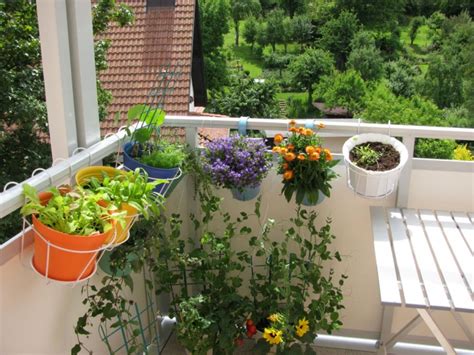Mastering Watering Techniques for a Thriving Balcony Garden
Balcony gardening is a popular way to bring nature into urban settings, providing a green oasis in limited spaces. A crucial element of maintaining a healthy balcony garden is mastering watering techniques. Whether you’re growing herbs, flowers, or vegetables, understanding how to manage watering effectively is key to the success of your container plants. In this article, we will explore the best practices for watering tips, the role of proper irrigation, and the impact on plant health, sustainability, and design aesthetics for your urban garden.
Key Concepts for Watering Balcony Plants
Effective plant care starts with understanding the unique needs of your balcony garden. Factors like plant species, soil type, pot material, and sun exposure all influence how you should water your plants. In addition, container gardening presents unique challenges, as soil in pots can dry out faster than in-ground gardens.
- Drainage: Ensure pots have proper drainage holes to prevent root rot from overwatering.
- Soil moisture: Use moisture-retaining soil or add compost to improve water retention.
- Water frequency: Adjust watering based on the season, plant type, and environmental factors such as wind or humidity.
Historical Context of Urban Gardening
Urban gardening has long been a practice used to enhance food security and beautify city spaces. From ancient Mesopotamian terrace gardens to the victory gardens of World War II, urban farming has evolved to meet human needs in limited space. Modern balcony gardening continues this tradition, blending sustainability with aesthetic appeal.
Current State of Balcony Gardening and Watering Challenges
Today, urban gardeners face the challenge of balancing sustainability with practicality. Watering methods must ensure plants thrive while reducing water waste. The rise in urban gardening has led to innovations such as self-watering pots and efficient irrigation systems. Yet, irrigation techniques remain a primary concern for many apartment dwellers with balconies.
Common Watering Mistakes:
- Overwatering: Drowning plants by adding too much water too frequently.
- Underwatering: Allowing soil to become bone dry, especially in small containers that dry out quickly.
- Inconsistent watering: Neglecting a regular watering schedule, leading to plant stress.
Practical Applications: How to Water Your Balcony Garden
Managing water use effectively is critical for keeping your balcony garden lush and healthy. Here are some actionable watering tips:
- Check soil moisture regularly: Stick your finger an inch into the soil. If it feels dry, it’s time to water.
- Water early in the day: Watering in the morning reduces evaporation and allows plants to absorb moisture before the heat of the day.
- Use a watering can with a fine rose head: This ensures even distribution of water without disturbing the soil.
- Self-watering containers: These pots have reservoirs that supply water to the roots as needed, helping reduce water waste.
- Mulch the surface: A layer of mulch helps retain soil moisture, particularly in the hot summer months.
Case Studies: Success Stories in Balcony Watering
| Case Study | Key Takeaways |
|---|---|
| Herb Garden in Containers | Used a self-watering system to grow herbs like basil and mint with minimal daily maintenance. |
| Flowering Plants on a Shaded Balcony | Adopted a watering schedule based on soil moisture levels, leading to blooming flowers even in low-light conditions. |
| Urban Vegetable Garden | Implemented drip irrigation, reducing water consumption while yielding a high harvest of tomatoes and peppers. |
Stakeholder Analysis: Urban Gardeners and Environmental Impact
Urban gardeners, balcony gardeners in particular, are motivated by various factors—food production, aesthetic improvement, and environmental responsibility. Proper water management reduces water waste and ensures that balcony gardens contribute positively to urban ecosystems.
- Homeowners: They seek convenience and may prioritize self-watering systems.
- Environmentalists: They focus on sustainability, preferring methods that minimize water use.
- City planners: Promoting urban greenery to enhance public spaces, reduce pollution, and foster mental well-being.
Implementation Guidelines: Steps to Set Up Watering Systems
Follow these steps to ensure optimal watering for your balcony garden:
- Choose the right containers: Select pots with adequate drainage and consider using self-watering planters for ease.
- Install drip irrigation: Drip irrigation systems can be tailored for small spaces, delivering water directly to plant roots with minimal waste.
- Monitor soil moisture: Use tools like soil moisture meters to ensure plants get the right amount of water.
- Mulching: Add mulch to help retain moisture and reduce evaporation in hot weather.
Ethical Considerations in Balcony Gardening
Water conservation is a significant ethical issue in urban gardening. With increasing urbanization, efficient water use is essential. Practices such as rainwater harvesting and using greywater for irrigation can help reduce reliance on municipal water supplies.
Limitations and Future Research in Balcony Watering Techniques
Despite the advancements in watering technologies, several limitations remain. For instance, not all self-watering systems are designed to accommodate large plants or root-intensive crops. Additionally, weather variability in different regions can complicate the optimal watering schedule. Future research could focus on developing smart irrigation systems that dynamically adjust water levels based on real-time environmental data.
Expert Commentary on Balcony Watering Management
Experts emphasize that understanding the specific needs of your plants is paramount. “No two balcony gardens are the same,” says urban gardening specialist Jane Green. “Learning to read your plants and tailoring your watering strategy accordingly is key to success.” Moreover, innovations in irrigation techniques are making it easier than ever for city dwellers to manage their plants without compromising sustainability.


